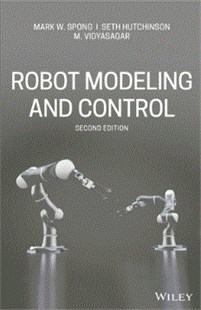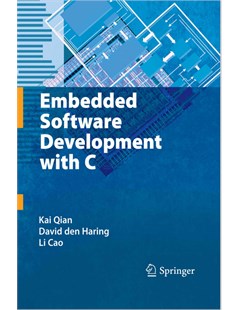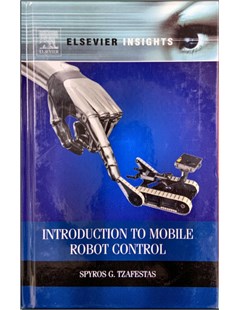Robot Modeling and control
In the 2nd Edition of Robot Modeling and Control, students will cover the theoretical fundamentals and the latest technological advances in robot kinematics. With so much advancement in technology, from robotics to motion planning, society can implement more powerful and dynamic algorithms than ever before. This in-depth reference guide educates readers in four distinct parts; the first two serve as a guide to the fundamentals of robotics and motion control, while the last two dive more in-depth into control theory and nonlinear system analysis.
2018
A New Edition Featuring Case Studies and Examples of the Fundamentals of Robot Kinematics, Dynamics, and Control
In the 2nd Edition of Robot Modeling and Control, students will cover the theoretical fundamentals and the latest technological advances in robot kinematics. With so much advancement in technology, from robotics to motion planning, society can implement more powerful and dynamic algorithms than ever before. This in-depth reference guide educates readers in four distinct parts; the first two serve as a guide to the fundamentals of robotics and motion control, while the last two dive more in-depth into control theory and nonlinear system analysis.
With the new edition, readers gain access to new case studies and thoroughly researched information covering topics such as:
● Motion-planning, collision avoidance, trajectory optimization, and control of robots
● Popular topics within the robotics industry and how they apply to various technologies
● An expanded set of examples, simulations, problems, and case studies
● Open-ended suggestions for students to apply the knowledge to real-life situations
A four-part reference essential for both undergraduate and graduate students, Robot Modeling and Control serves as a foundation for a solid education in robotics and motion planning.
TABLE OF CONTENTS
1 Introduction
1.1 Mathematical Modeling of Robots
1.2 Robots as Mechanical Devices
1.3 Common Kinematic Arrangements
1.4 Outline of the Text
2 Rigid Motions
2.1 Representing Positions
2.2 Representing Rotations
2.3 Rotational Transformations
2.4 Composition of Rotations
2.5 Parameterizations of Rotations
2.6 Rigid Motions
2.7 Chapter Summary
3 Forward Kinematics
3.1 Kinematic Chains
3.2 The Denavit-Hartenberg Convention
3.3 Examples
3.4 Chapter Summary
4 Velocity Kinematics
4.1 Angular Velocity: The Fixed Axis Case
4.2 Skew-Symmetric Matrices
4.3 Angular Velocity: The General Case
4.4 Addition of Angular Velocities
4.5 Linear Velocity of a Point Attached to a Moving Frame
4.6 Derivation of the Jacobian
4.7 The Tool Velocity
4.8 The Analytical Jacobian
4.9 Singularities
4.10 Static Force/Torque Relationships
4.11 Inverse Velocity and Acceleration
4.12 Manipulability
4.13 Chapter Summary
5 Inverse Kinematics
5.1 The General Inverse Kinematics Problem
5.2 Kinematic Decoupling
5.3 Inverse Position: A Geometric Approach
5.4 Inverse Orientation
5.5 Numerical Inverse Kinematics
5.6 Chapter Summary
6 Dynamics
6.1 The Euler-Lagrange Equations
6.2 Kinetic and Potential Energy
6.3 Equations of Motion
6.4 Some Common Configurations
Mark W. Spong, Robot Modeling and control, Wiley, 2018
 |  |  |
| Embedded Software Development with C | Introduction to Mobile Robot Control |
Thứ Ba, 16:48 21/02/2023
Copyright © 2018 Hanoi University of Industry.